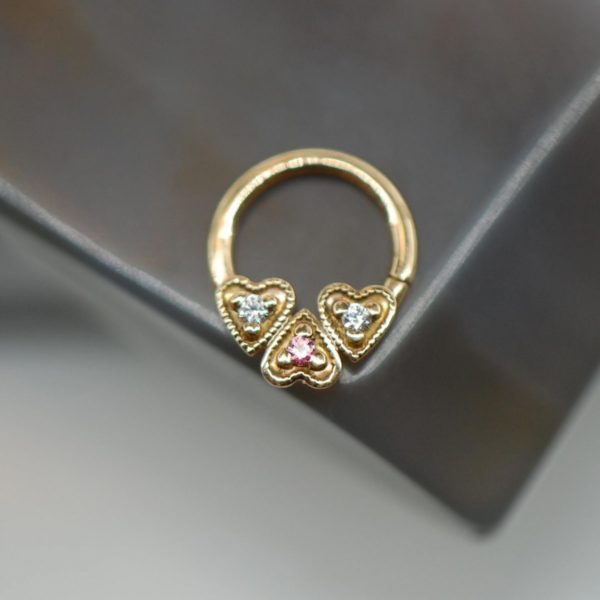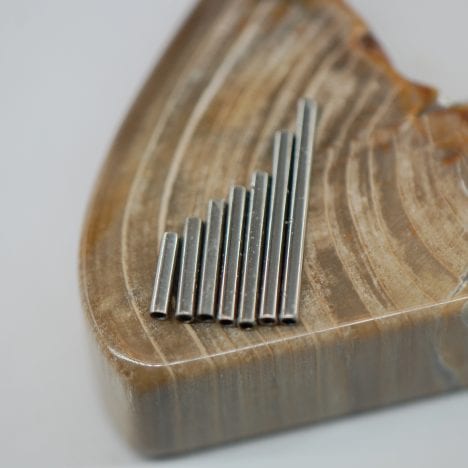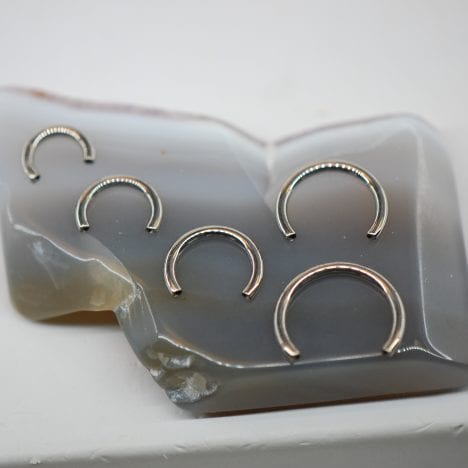When we review aftercare with clients, we always discuss using a sterile wound wash saline to clean and care for new piercings. Many times we have clients ask “That’s just salt water right? Can I make my own at home?”; and although this used to be something we all suggested as part of aftercare back in the day, through some extensive research, the recommended aftercare changed to no longer include the option to DIY saline at home. If you’re curious as to why store bought is better, we’ll go a little more in-depth in this article!
Sterile wound wash saline is different from other forms of saline and salt mixtures for a number of reasons. A good foundation for understanding these differences is to know what each solution is made up of. To start, sterile wound wash saline is commonly a mix of purified pharmaceutical (USP Grade) water and 0.9% w/v NaCl (USP Grade Salt). This mixture is also referred to as Isotonic Saline because the salt concentration and pH is similar to that found in human tears, blood and other bodily fluids. This means the mixture is gentle enough that it shouldn’t burn or sting/cause damage when used on a healing piercing. The saline is then packaged in a sterile aerosol can for easy use and storage. This extra packaging is what is most important to note, because the sealed aerosol can allows the solution to remain sterile (free from all living organisms, like bacteria) for the entire time you have it. Keep in mind that eye and nose saline should never be used on piercings because those products often come in resealable packaging that can collect bacteria, dust, etc once the seal is broken; they also often contain other additives and preservatives that can be harmful when used on a puncture wound. Sterile wound wash saline only ever has two ingredients and is always drug and preservative free!
Next under the microscope is home-mixed salt water solutions. There are an abundance of online references that tell you how to make your own saline solution at home; many of which recommend using distilled water and simple table salt. The idea of table salt being used on any wound can be considered cringe worthy. Think about it: table salt is meant for food. Food salt (even if its “non-iodized” food salt) gets made by drying portions of salt mounds in salt flats; which are large areas of land that are fully exposed to the elements including bugs, bacteria, and local wildlife. This means critters are able to walk on, eat and even defecate on the salt itself while it dries. The salt gets processed and cleaned after that but in all food products there is an acceptable level of bacteria or contaminants that are allowed to remain even after cleaning. For reference, “The Food Defect Action Levels: Levels of natural or unavoidable defects in foods that present no health hazards for humans” is a publication of the United States Food and Drug Administration’s Center for Food Safety and Applied Nutrition that details the acceptable levels of food contamination from sources such as maggots, thrips, insect fragments, “foreign matter”, mold, rodent hairs, and insect and mammalian feces. The publication details the acceptable amounts of contaminants on a per food basis, listing both the defect source (pre-harvest infection, processing infestation, processing contamination, etc.) and significance (aesthetic, potential health hazard, mouth/tooth injury, etc.) So basically, for food salt, there are acceptable levels of bacteria and other contaminants that are allowed to exist and remain in the final product (including bugs and feces!) Beyond that, mixing saline yourself at home leaves room for many other chances of contamination. If the bowl you use wasn’t washed properly, or even has traces of soap, those contaminants are now part of the mixture you plan to clean your piercing with. Pet dander, smoke, perfume, or anything else in the air can contaminate it as well. If you are mixing in bulk to store it, there’s an even greater chance of contamination over time during storage; and as stated above, resealable containers do not keep saline protected or sterile in any way. The other downside to mixing your own saline at home is that there’s no way to guarantee you’ll be able to make it the correct pH to be effective rather than harmful, nor is there a guarantee it’ll stay that pH overtime as the water evaporates when stored. Realistically, not many people are sitting at home with their own set of litmus pH testing strips and testing their homemade saline to ensure its the same pH as the human body. Therefore often times homemade saline is too harsh and drying which may cause irritation to a healing piercing.
Making your own saline at home was widely suggested as piercing aftercare throughout the 90’s and 00’s. Shops used to even give clients small baggies of salt to take home with them! This was because sterile wound wash saline wasn’t very accessible to the common public so we had no choice but to make our own. However, saline wound wash became easier to produce and manufacture over time, and it became widespread and affordable. Nowadays you can find sterile wound wash saline at any local pharmacy, or even websites like amazon sell it in bulk to the public. There’s no longer any need to make the mixture on your own and potentially harm or irritate your delicate healing piercing. It’s much easier and safer to buy it premade from the store!





